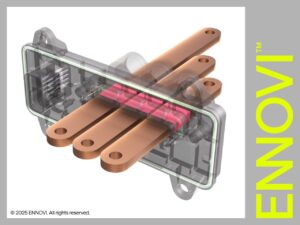Subscribe to receive the latest daily news from CleanTechnica via email. Or follow us on Google News!
Advances in electric appliances, electric vehicles, rooftop solar, and energy storage—as well as incentives from utilities and governments—are driving increased consumer interest in these technologies. Consumer investments may include upgrading electrical service panels, especially when installing multiple electrification measures in older homes (see image). In some cases, utilities may need to upgrade their equipment.
Berkeley Lab’s new technical brief, “Sizing Electric Service Panels and Utility Infrastructure for Residential Electrification and Distributed Energy Resources Adoption,” clearly outlines the components of customer- and utility-owned electric service and considerations for upgrading equipment to support electrification and distributed energy resources adoption.
Examples of appliances that homes can convert to electricity include high-efficiency heat pumps for heating and air conditioning, heat pump water heaters, induction cooktops for cooking, and heat pump clothes dryers.
When evaluating the need to upgrade residential electrical service, the primary considerations are the type and age of the main breaker panel, the size of the main breaker, and the number of available breaker spaces. The National Electrical Code allows the use of metered electricity usage data to determine whether new load additions to existing residential buildings require a main breaker upgrade. Using demand data from advanced meters to size main breakers is more accurate than using traditional demand factor estimates. Performance data reflects the actual peak demand requirements of the residence and can reveal whether or not panel upgrades are needed.
Other measures can help reduce the need to update electrical service equipment—for example:
Use high-efficiency appliances to reduce overall electricity demand and create more space for new loads Install a subpanel to increase available space without having to upgrade the entire panel “Plug sharing” or “circuit sharing” to enable a single breaker position to connect multiple loads (e.g., clothes dryer and EV charger) by allowing only one load to operate at a time Automatically control loads by disconnecting specified loads if pre-set load limits are exceeded
The technical brief was authored by Cody Davis, an electrical power engineer, and Lisa Schwartz, of Berkeley Lab. The work was supported by the U.S. Department of Energy’s Office of Energy Efficiency and Renewable Energy.
Contact: Lisa Schwartz, Energy Markets and Policy Division, Berkeley Lab

Publication Type: Policy Brief, Publication Date 07/2024, Authors: Davis, Cody, Lisa C. Schwartz
Abstract: This Berkeley Lab technical brief summarizes key considerations for electrical service equipment and utility infrastructure to support residential customer electrification and the adoption of distributed energy resources such as solar photovoltaics and energy storage.
Department of Energy Regulation, Markets and Policy, Energy Analysis and Environmental Impacts Division
Research Areas, Integrated Distribution System Planning 2, Efficiency, Electricity and Resilience, Integrated Distribution System Planning – Project
Related files: Brief PDF (704.18 KB)
Courtesy of the Department of Energy, Lawrence Berkeley National Laboratory, Energy Technologies Area, Berkeley Lab.
Do you have a tip for CleanTechnica Magazine? Would you like to advertise? Would you like to suggest a guest for the CleanTech Talk podcast? Contact us here.
Latest videos from CleanTechnica.TV

advertisement
CleanTechnica uses affiliate links. See our policy here.
CleanTechnica Comments Policy




